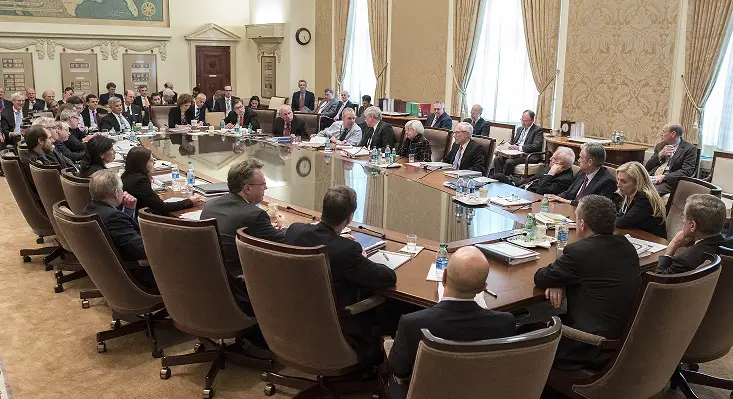On Wednesday the Federal Reserve announced it had raised interest rates for a fourth time by 75 basis points, although policymakers hinted that they might slow the pace of the increases going forward. However after the Fed’s policy meeting, Fed Chair Jerome Powell, in his statement, reaffirmed the central bank’s determination to continue to raise rates as it battles an increasingly intractable inflationary environment.
The Fed’s policy statement said, “In determining the pace of future increases in the target range the committee will take into account the cumulative tightening of monetary policy, the lags with which monetary policy affects economic activity and inflation and economic and financial developments.”
Advisors Capital Management Partner JoAnne Feeney said in an interview, “No surprise here. Growth is moderating, and I think that might suggest to the market that the end might be in sight for rate increases.”
Stocks rose after the statement, but then fell as Powell continued to maintain the Fed “has a ways to go” in its fight against inflation, indicating future rate hikes were likely to continue.
Powell emphasized, “It is very premature, in my view, to think about or be talking about pausing our rate hikes. We have a ways to go. Our policy, we need ongoing rate hikes to get to that level of sufficiently restrictive [territory] — and of course, we don’t know exactly where that is. … I would expect to us to continue to update it based on what we’re seeing with incoming data.”
Wednesdays rate increase brings the benchmark federal funds rate to 3.75%-4%, the highest level it has seen since 2008. In his press conference, Powell commented that the key rate may need to rise above the previously predicted 4.6%.
Since the Federal Reserve began using the fed funds rate as a mechanism to alter monetary policy in the late 1980’s, four 75 basis point hikes in a row is unprecedented. The vote was reported to be unanimous.
The statement noted that once the key rate became sufficiently restrictive in the Fed’s estimation, it would maintain that rate for “some time” until there was “compelling” proof that the rate of inflation had begun to return to the Fed’s target rate of 2%.
When asked if it has become less likely the Federal Reserve would be able to engineer a “soft landing Powel said, “The inflation picture has become more and more challenging over the course of this year. That means we have to have policy more restrictive, and that narrows the path to a soft landing.”
Powell noted that although there is ample evidence of slowing economic growth, interest rates would need to continue to rise, because in the Fed’s estimation, the labor markets remain, “out of balance.”
Fed officials feel the job market continues to exhibit strong job gains, and low unemployment, which it feels is driving salaries up and fueling the rise of costs. However there is evidence the job market may be cooling, as in August job openings dropped precipitously, and there is a lower job quitting rate, as fewer new jobs are being introduced on a monthly basis.
Experts have predicted that the jobs report coming out Friday will show 200,000 non-farm jobs were created in October, which would mark a decline from the 263,000 payrolls created in September, and a steep decline from the monthly average of 420,000 in 2022.

